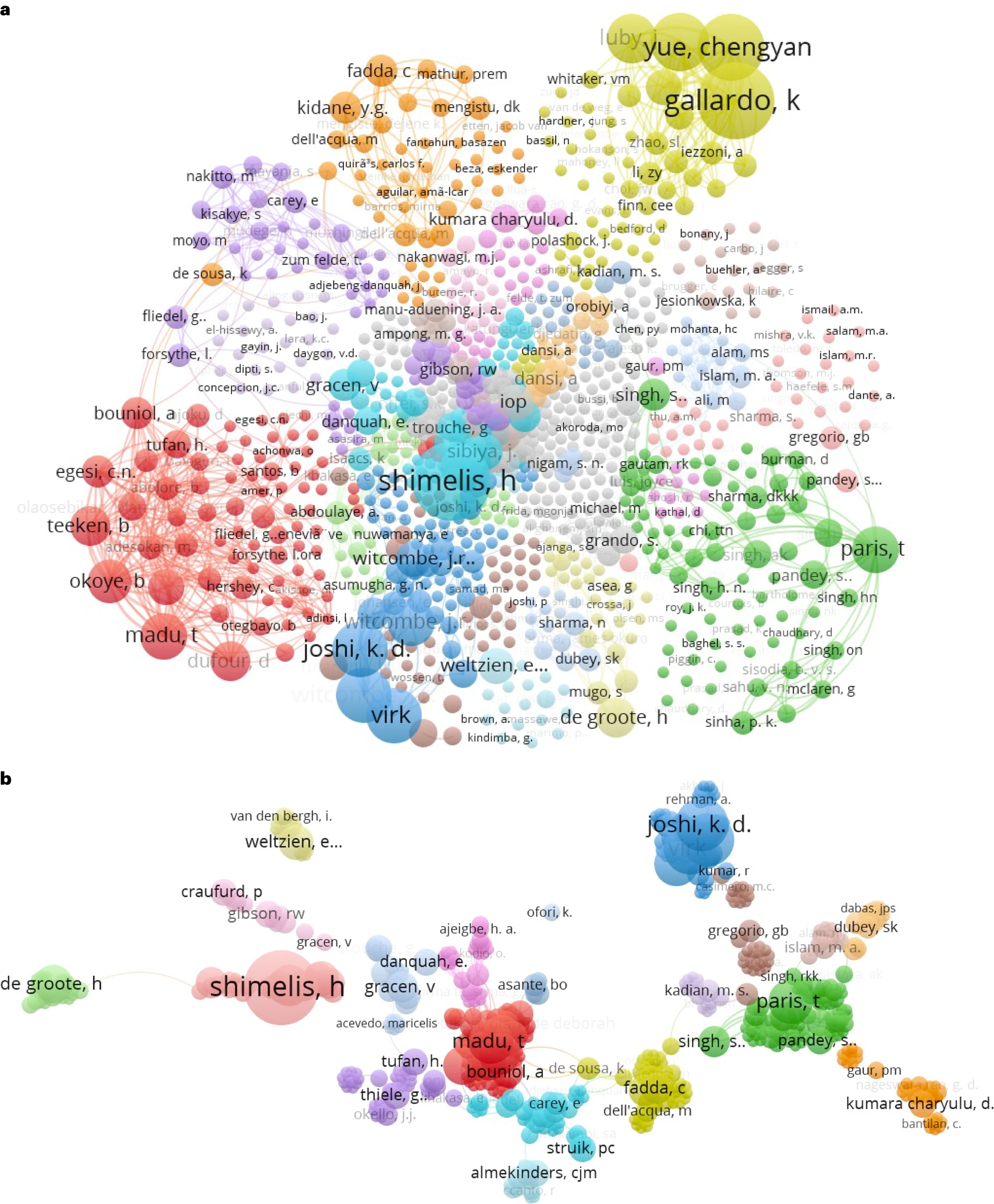






Sergio Puerto
Postdoctoral Scholar
University of California, Berkeley
: 251 Giannini Hall
: serg@berkeley.edu
About me:
I am an applied economist studying the impact of innovation, research, and technology on economic development. Currently, I am working with Professor Ted Miguel at UC Berkeley's Center for Effective Global Action on the creation of the Impact Data and Evidence Aggregation Library (IDEAL).
Working Papers:
Innovation and Technological Mismatch
I estimate the impact of research biases on the diffusion of agricultural biotechnology among low-income farmers.
Coverage:
World Bank's DIME Blog |
New Things Under the Sun |
SeedWorld Magazine
Rural household response to migration-related labor shocks I examine how family farms adjust their labor allocation and farming practices in response to labor supply shocks.
Teaching:
Fall 2024: AEM 2350 - Introduction to the Economics of Development
Spring 2023: ECON 3550 - Economics of Developing Countries
Selected Articles:
What can we learn from 40 years of crop improvement research?
Nature Plants (2024)
Can specialty markets improve agrobiodiversity?
Environmental Research Letters (2023)
Can behavioral interventions reduce illegal fishing?
Marine Resource Economics (2021)
Do better quality goods travel farther?
Agricultural Economics (2019)
Is Collective Action a decentralized outcome?
International Journal of the Commons (2016)
Other work in progress:
Measuring the Heterogeneous Effects of Input Subsidies on Household Outcomes: Evidence from Malawi
PRCI Research Papers #14
with Christone J. Nyondo, Zephaniah B. Nyirenda, Maggie G. Munthali, and Brian Dillon
We study the effects of a nation-wide input subsidy program on the productivity and income of (young and old) rural households.
Risk-reducing Incentives and Preventive technologies
[New draft coming soon]
with Miguel I. G ́omez, Francisco Leal-Yepes, Sabine Mann, and Jessica McAr
We study how risk preferences influence farm practices when farmers have little control over individual production units.
Wololo!
I hope you enjoy my website. This JavaScript wrapper mimics the original Windows 95' operating system.
You can use the < Start > button, or click on the icons in the desktop to navigate. You can also move, rearrange, resize and close windows. If you encounter any issue just reload the page.
Everything here is mine, except all the things I borrowed to avoid hard-coding this.
Credits:
> Shout-out to Victor Ribeiro, who developed the web components for the fake opereating system (FOS project), and most of the artwork.
> Icons art from Artage.io
> Instructor of Record - Fall 2024
AEM 2350: Introduction to the Economics of Development
Cornell University
Syllabus [here]
> Instructor of Record - Spring 2023
ECON 3550: Economics of Developing Countries
Cornell University
Syllabus [here]
> Teaching Assistant, Fall 2022
AEM 4110: Introduction to Econometrics
Instructor: Lauren Tauer
> Teaching Assistant, Fall 2016
Fundamentals of Behavioral Sciences
Masters in Management Research
Universidad de los Andes, Colombia
Instructor: Maria Alejandra Vélez
> Teaching Assistant, Spring 2015 - Spring 2016
Environmental and Natural Resources Economics
Masters in Environmental Management
Universidad de los Andes, Colombia
Instructor: Maria Alejandra Vélez
Click here to see my CV in a new window
. run jmp_final_version2_thistimeforreal_final.do
How do scientists' decisions affect the adoption and productivity of new agricultural technology?
- First published here: DIME Blog
The technology adoption puzzle
Agriculture plays a crucial role in global food security and economic development. Current crop yield growth rates are insufficient to meet rising demand, making innovation in agricultural technology essential for the future of global food supply. However, despite the potential benefits of new technologies, low-income and small-scale farmers often remain reluctant to adopt them. These farmers, who produce most of our food, are the ones who need these technologies the most.
Economists have studied this problem for a long time, mainly focusing on farmers' failure to adopt new and improved inputs and practices. However, it is often overlooked the fact that new technology is not usually tailored to the needs of low-income farmers. Biases in research and development (R&D) tend to favor high-income farmers, large-scale farms, and internationally traded crops. In some cases, innovators and input suppliers only target profitable markets, which implies that certain crops receive little R&D investment (i.e., orphan crops). In others, new agricultural technology is less diverse. When innovators face research constraints (e.g., information asymmetries, diseconomies of scope), the supply of new agricultural technology is small compared to the diverse set of farmers' conditions and preferences. These constraints create a mismatch between what agricultural innovations have to offer and farmers' demand for new technology. Technological mismatch can have significant effects on agriculture, from delaying the transition to climate-resilient agriculture to exacerbating rural inequality. It could also put less food on our plates.
In my Job Market Paper, I set out to answer two questions. First, I estimate the impact of technological mismatch on adoption and productivity of improved crop varieties. Second, I explore what factors contribute to technological mismatch in the context of a developing country. I argue that mismatch is especially relevant when innovators face little competitive pressure to internalize farmer heterogeneity. In contexts where seed markets are informal or incomplete, the absence of competition to weed out inappropriate technology allows innovators to supply crop varieties that perform well under controlled conditions but may not benefit farmers.
To answer these questions, I conducted a randomized controlled trial with small-scale farmers in Costa Rica. The country is located in the Central American Dry Corridor, which is prone to frequent dry spells. Plant breeders at the National Plant Breeding Program have worked for seven years to develop a new common bean variety tolerant to drought stress. They developed several candidates for the new seed, but it is the norm to release a single variety to supply all farmers in the country –a large and heterogenous group. And this is not uncommon (see Figure 1). Although there is no systematic data about released crop varieties in developing countries, the information available suggests that only a small number of new varieties is released and made available to farmers.

Matching farmers’ preferences to new seed
I designed an experiment in which I asked: What would happen if, instead of releasing a single variety for all farmers, innovators could supply multiple varieties that match farmers' preferences? A key challenge is that we only observe the varieties that innovators release, not the counterfactual varieties they may have developed had they been able to properly match farmers' preferences. I therefore conducted a two-stage randomized controlled trial with 800 farmers, in which I experimentally varied farmer access to new drought-tolerant bean varieties developed by plant breeders in Costa Rica.
The experiment was divided into two stages. First, half of the farmers conducted agronomic trials on their fields. The objective was to estimate the new seeds' performance under real-world farm conditions and to elicit farmers' preferences over the new varieties. Stage 1 results show that farmers have a diverse set of preferences, since no single variety was preferred by most farmers and the distribution of farmers’ preferences across the new seed varieties was relatively uniform.
In the second stage, farmers got the chance to buy a fixed quantity of one of the new seed varieties. Some farmers were offered new seed variety matching their preferences from the agronomic trials in Stage 1 (Farmer's Choice group). Other farmers were offered a new seed variety chosen by the scientists as a blanket recommendation for all farmers, regardless of their participation in the agronomic trials (Breeders' Choice). This recommendation was made following a process analogous to the actual release of new varieties in Costa Rica.
Consistent with our puzzle, the overall uptake of the new improved varieties was low. Almost all the farmers who participated in the agronomic trials stated they were willing to adopt a new variety, but only 43% purchased the new varieties when offered. A potential explanation is that not many farmers saw a benefit in adopting, given that only 56% indicated that the new seeds were strictly better than their current seed. Moreover, farmers who were offered their preferred new seed are less likely to purchase the recommended seed. While 39% of farmers in the Breeders’ Choice group purchased the recommended variety, only 22% of farmers in the Farmer’s Choice group did so. This 17-percentage points difference suggests that the recommendation promoted purchases of a variety that may be inappropriate for one in six adopters.
The impact of technological mismatch
Mismatch reduces adoption of the new seed. I found that take-up of the new varieties was 18 percentage points (or 41%) lower among farmers who were offered the seed chosen by the scientists (see Figure 2). This gap was larger for farms located farther from the research lab where the new seeds were developed, which suggests that spatial differences matter. Context-specific characteristics, such as ecological and environmental conditions, are fundamental to crop varieties' performance. However, if the cost of adapting the new seed to a given location is too high, in terms of R&D costs and innovators’ effort, the new seed will only respond to the needs of farmers in some locations but not in others.

The negative mismatch effect on adoption persisted even in areas with drought exposure. Remember that the new seeds were developed to improve crop resistance to drought events. Therefore, we should observe that farmers in drought-prone areas are willing to adopt the new seeds at a higher rate. That was not the case. Although drought was not particularly prevalent during the season the experiment occurred (only 5% of total reported weather events), this finding highlights an important trade-off between innovator’s priorities and farmers’ needs. While scientists have the responsibility to consider socially important goals, such as climate adaptation which plays out in the long run, farmers’ technology decisions may only incorporate more immediate concerns to season-to-season weather shocks.
Mismatch also had significant effects on productivity. An important empirical challenge is that farmers’ adoption decision is endogenous, and potentially correlated with farmer characteristics, farm practices and outcomes. To address this, I compare plots planted with the new varieties with regular bean plots within the farm, controlling for farm/farmer fixed effects. Furthermore, I use survey data on perceived plot quality to control for plot selection, in which farmers systematically choose the best or worst plots to plant the new seed. My results show that the new seeds are 31 % more productive among farmers who adopted their preferred variety. I find no impact on yields for those farmers who adopted the variety recommended by scientists. These results are robust to comparisons with plot-level data from a pure control group of farmers.
Moreover, I find that these effects on productivity are not driven by intensification, meaning that farmers are not using more fertilizer, labor, or seed in their plots. Instead, productivity increases because of matching new seeds to farmer preferences enables better adaptation to specific farm-level conditions, which are usually private information unknown to scientists. I find that those farmers who adopted their preferred variety experienced smaller output losses due to several productivity risks, such as rain-excess, drought events, and biotic threats. The magnitude of the prevented lost output is comparable to the estimated yield improvements described earlier.
In summary, technological mismatch occurs when new agricultural technologies are not tailored to farmers’ needs and conditions. This mismatch can arise from various factors, including research constraints and information asymmetries that prevent innovators from internalizing farmer heterogeneity. Many of the world’s agricultural innovators operate under those conditions, especially in developing countries. My results show that relaxing those constraints, by revealing and matching farmers’ preferences, can lead to substantial gains in agricultural technology adoption and farm productivity.
 About me
About me Resume
Resume Research
Research Teaching
Teaching Pictures
Pictures Readme
Readme visitor #




